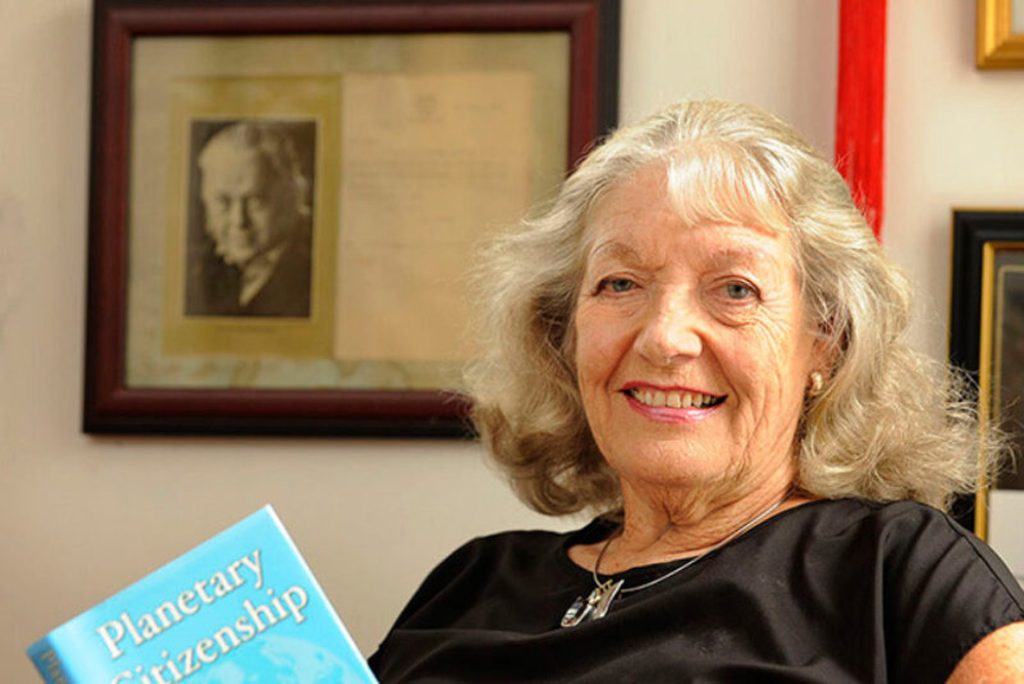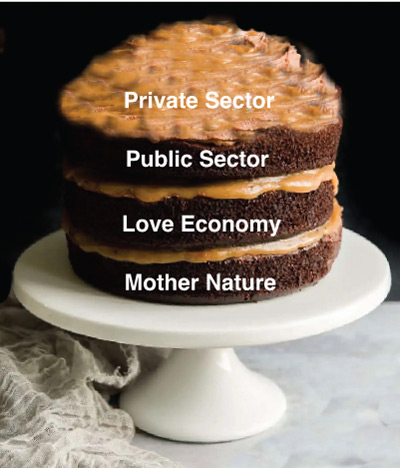
Today marks year two since Mapping the Green Transition began as a project of Fairfield’s Sustainable Living Coalition (SLC), and we have come a long way from where we started. Thanks to the suggestions of readers like you, we have unpacked topics in science, politics, economics, and related fields as they pertain to environmental and social sustainability.
While the subjects covered here have been wide in scope, there is one crucial idea that has tied this series together: outdated economic paradigms fuel our current social and environmental issues. This was also a fundamental concept in the work of Hazel Henderson, the environmentalist and economic futurist from whom the name “Mapping the Green Transition” was inspired.
Henderson, the architect of the Ethical Biomimicry Finance methodology, the Calvert-Henderson Quality of Life Indicators, and the global Transforming Finance initiative, passed and went “virtual” (her words) just over one month ago. This month, to honor Hazel Henderson’s legacy and conclude the second year of Mapping the Green Transition, we will dive into the major takeaways of the series, as well as Henderson’s philosophy and contributions to the environmental justice movement.
A New Cake Flavor

Last month, we explored the benefits of social capital: the value that society derives from high-quality interpersonal relationships. Social capital lays the foundation for the trust, altruism, cooperation, and support networks that are crucial to society’s functioning. Traditional economic thinking, however, has undermined the importance of social capital in favor of prioritizing financial return. Henderson understood that social capital, or as she called it, the “love economy,” and other quality of life indicators were being sidelined by macroeconomic statistics like GNP (gross national product). In response, Henderson promoted her view of a society’s productive system as a three-layer cake with icing, where the monetized portion of the cake rests on two vital but overlooked layers: the love economy and nature itself. Henderson viewed these bottom layers as an inseparable part of any economic system.
Transforming Economics
In Mapping the Green Transition, we have explored several ways to upgrade our economic systems to better serve our environmental and social needs. This has included ideas from Katherine Collins’s insightful book The Nature of Investing, in which she illustrates the importance of using natural principles such as “multifunctional design,” and “optimizing” rather than “maximizing” when evaluating organizational sustainability. We have also explored the basics of circular economics whereby we can advance beyond a linear “take, make, waste” economic model by capturing the byproducts of production to reuse as new inputs, another idea that Henderson advocated.
Three weeks before Henderson’s passing, she had given a call to Stuart Valentine, a local board member of the SLC and cofounder of the impact investment firm Centered Wealth. Below are some quotes of Henderson’s from their conversation:
“Money and markets are wonderful inventions, but the path to common prosperity cannot be achieved solely through an impartial transactional marketplace. We must rebuild and value the ‘love economy,’ which is based on trust, empathy, and reciprocity.”
“Markets play an important role, but in many aspects of human endeavor they are ill-equipped to meet the essential human needs provided by the love economy.”
“We must go beyond the market and the impersonal pricing system if we ever are going to find our way to fulfilling the core human need for trusting relationships.”
To the Reader
Your suggestions have been immensely valuable these last two years. I encourage you to submit any ideas for future topics you would like to see covered to terracycletown@gmail.com. You can always revisit older articles from Mapping the Green Transition online at iowasource.com/author/drew-schoenfeld. Finally, a huge thanks to the Sustainable Living Coalition and Stuart Valentine for supporting this series, as well as all of you for reading it!
With much appreciation,
Drew
